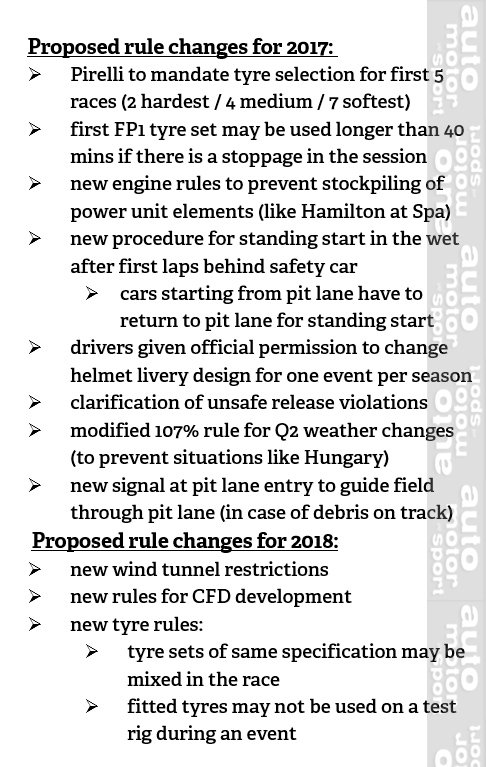Okay, so if we focus on "slow down - thus lose downforce - in order to follow directly behind the leading car":bhall II wrote:The problem is that two cars can't occupy the same space at the same time. A trailing car that would be quicker given different conditions has three options when approaching a corner:
- crash into the leading car, aka "the Maldonado"
- slow down - thus lose downforce - in order to follow directly behind the leading car
- take a different line - thus losing speed, thus losing downforce
Firstly we have eliminated wake turbulence as a problem, as per your earlier post "It would happen even if the adverse effects of wake turbulence were somehow magically eliminated."
Losing downforce (by slowing) to say inline with the car ahead isn't really a problem. While the chasing car will have lost downforce (all other things being equal e.g tyre performance), it will still produce at least as much as the car ahead. Having to stay inline happens in all forms of road racing, even motorcycle racing where there is often only one line, yet we see plenty of overtaking there. In the scenario you describe, all the chasing car has to do is stay close enough until they reach a straight, where it can slingshot past with the aid of the slipstream.
One problem is modern 'Tilke' circuits. These are often designed with a slow speed corner leading onto a long straight. Exiting the corner at low speed, with the 'accordion effect' taking place as well as less effective slipstreaming, (due to the accordion effect and the low initial speed) makes overtaking very difficult without quite a significant pace advantage from the chasing car.



